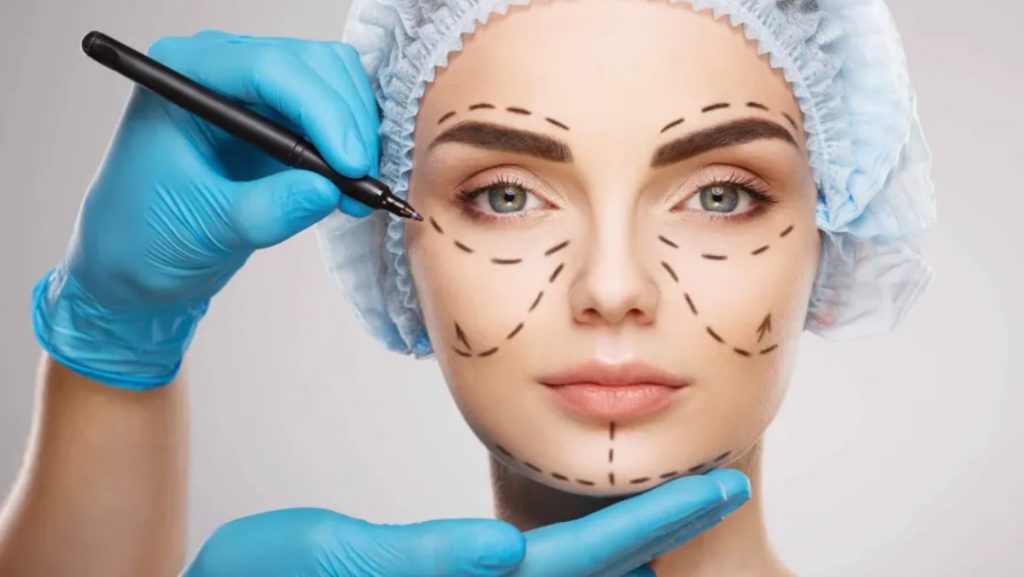Printed with permission from www.aedit.com!
When it comes to cosmetic procedures, it’s proportion — not perfection — that will ensure you look your best. Here, plastic surgeons explain why the key to a “perfect” face is all about balancing your features.
The Duchess of Cambridge’s nose. Penélope Cruz’s lips. Angelina Jolie’s cheekbones. Ask any plastic surgeon and, chances are, they’ve encountered any number of patients entering their office with pictures of those celebrity facial features. It’s certainly not surprising that people going in for cosmetic surgery would ask that the body part in question be made to look like that of a certain Hollywood star deemed “perfect.” But any surgeon worth his or her weight in BOTOX® will tell you that proportion — not perfection — is the secret to looking your best.
“In our social media culture, we definitely see patients coming in requesting this person’s nose and that person’s eyes. But I tell them that I’ll make you the best you,” says Philadelphia facial plastic surgeon Jason Bloom, MD. “It’s so important to have a conversation explaining why everything from the patient’s skin type and texture to their ethnicity dictates what will look right on them — not to mention the proportions of their face.”
While we’re all familiar with the phrase “beauty is in the eye of the beholder,” plenty of research has been done into what physical attributes so-called “beautiful people” have in common. The Ancient Greeks discovered the Golden Ratio of nature (which may or may not be able to duplicated in the human body — though Leonardo DaVinci used the mathematic marvel when painting the Mona Lisa), and, needless to say, the interest in perfection has only spiraled from there.
Here’s the thing: There’s a reason why Kate Middleton’s nose is so admired. With its 106-degree nasal tip rotation, the Duchess’ sniffer is about as close to “mathematically perfect” (yes, you read that correctly) as it gets. Research shows that noses angled between 104 and 108 degrees are considered the most attractive. Scarlett Johansson, Kate Beckinsale, and Jessica Biel are similarly #blessed with the ideal proportion, but that doesn’t mean it’s right for everyone.
Dr. Bloom explains that Kate’s nose wouldn’t necessarily flatter someone with thicker skin or more sebaceous glands. “Rhinoplasty is certainly one surgery where you have to take these factors into consideration — on top of nose shape and facial symmetry,” he says.
In 2016, Amber Heard’s face was found to be 91.85 percent accurate to the elusive Golden Ratio, followed closely by Kim Kardashian and Kate Moss. But taking any one of their features and putting them onto someone else’s body wouldn’t necessarily yield a desirable result.
“The key to facial beauty is proportions, not just particular features,” says Nashville-based plastic surgeon Jacob Unger, MD. “This means beauty is actually found in how various features relate and interact with one another on someone’s face. It’s why big features like the eyes or cheekbones of Angelina Jolie work very well on her face, but would not on others.”
Speaking of Jolie, her plush pout is a case study in proportion. According to a study in JAMA Facial Plastic Surgery, one-third of the fullness should be on the top lip and two-thirds on the bottom lip-chin area.
“If you look at Angelina Jolie, her lips look perfect on her face because they follow this ratio,” explains Dr. Bloom. “So, when a patient says they just want their upper lip filled, I explain that it won’t look natural. They won’t look their personal best, if it’s not recreating that ratio. You often see when this goes wrong because that’s when people have duck lips.”
The ratios extend to the rest of the face, too. It may be hard to visualize, but, horizontally, the ideal width of a face is about five-eyes wide — meaning, if you measure your face across, there would be space for another eye between your two actual eyes and room for one more eye on each temple.
Vertically, meanwhile, the face is divided into thirds, with an equal distance between the hairline and brow, brow and nose, and nose tip and chin. Rather than trying to recreate the alleged perfect face, a cosmetic surgeon can employ any number of tricks to add balance and, yes, proportion as needed.
“If you have a surgeon who is focused on proportion, he or she can find ways to lengthen or shorten these areas using optical illusions,” says Dr. Bloom. For someone who wants his or her forehead to look smaller, Dr. Bloom can visually minimize the temples by injecting them with filler. Conversely, if the bottom half of the face is too stout, filler may be injected into the chin to create length.
All of this is not to say that you shouldn’t arrive at your next plastic surgery consultation with inspo pics of your favorite celebs in tow. The visual cues can be a good way to show your surgeon your preferred aesthetic. But, ultimately, it is important to let your own facial structure — and your doctor — be your guide in creating a look that could only be yours.
Visit www.dermabrightclinic.com to learn more about our anti-aging technical facials, peels and machine treatments!

